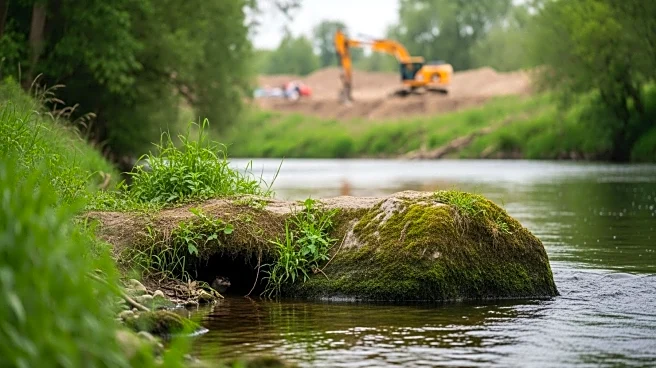What's Happening?
The UK government is proposing new planning reforms aimed at streamlining housing and infrastructure development processes. These reforms include a 'nature restoration levy' that allows developers to pay
a fee to offset environmental damage, rather than adhering to site-specific wildlife protection rules. Conservationists are raising concerns that this approach could endanger vulnerable species such as otters, beavers, and dormice, which rely on specific habitats that cannot be easily relocated or restored. The effectiveness of this system has only been proven for the great crested newt, and experts fear it could push other species toward extinction.
Why It's Important?
The proposed planning reforms could have significant implications for wildlife conservation in the UK. By allowing developers to pay a fee instead of following strict environmental protection guidelines, the reforms risk undermining efforts to preserve habitats critical to the survival of endangered species. This could lead to further habitat loss and fragmentation, exacerbating the decline of species already at risk. The broader impact on biodiversity and ecosystem health could be severe, affecting not only wildlife but also the ecological services they provide, such as water purification and flood control.
What's Next?
Conservationists are calling for a precautionary approach to the planning reforms, urging the government to base decisions on scientific evidence to ensure wildlife protection is not compromised. They advocate for detailed, site-specific data to guide development processes and prevent the misuse of the new system for profit or political convenience. The government faces pressure to demonstrate that the 'nature restoration levy' can effectively safeguard diverse species and habitats, and to address the concerns raised by environmental groups.
Beyond the Headlines
The planning reforms highlight a broader ethical debate about balancing development needs with environmental conservation. The potential shift from site-specific protections to a strategic, fee-based system raises questions about the value placed on natural habitats and the long-term consequences for biodiversity. This development could set a precedent for how environmental policies are shaped in the future, influencing global conservation strategies and the prioritization of economic growth over ecological preservation.











